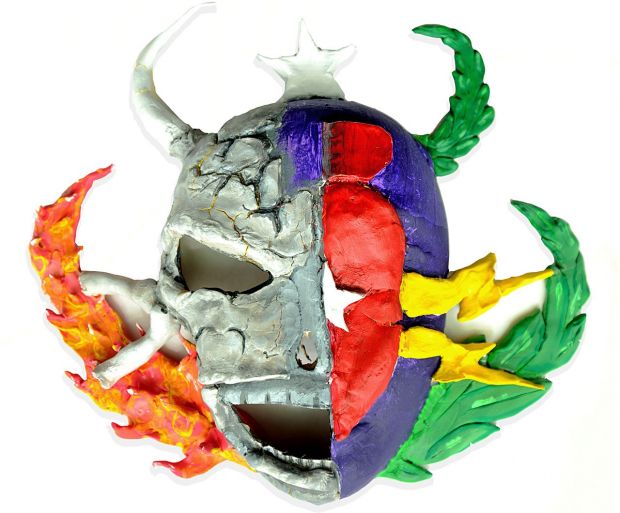New Study Provides Insights into PTSD Among Military Patients

National Endowment for the Arts Recognizes PTSD Awareness Day with Release of New Research
From Victoria Hutter, Assistant Director, Press/Public Affairs, National Endowment for the Arts –
A new study funded by the National Endowment for the Arts (NEA) reveals that artwork created by military service members as part of their medical treatment for psychological health conditions conveys valuable information for doctors. This benefit is especially important for patients who struggle to express their thoughts and feelings. In another research development, the NEA is posting a framework document that maps new research priorities for the agency’s Creative Forces: NEA Military Healing Arts Network. Both the new study and the research agenda aim to extend knowledge about how, when, and why creative arts therapies improve health for patients coping with the effects of their wartime experiences. The NEA announced these two resources as the nation recognized PTSD Awareness Day on June 27.
“The newly published study exemplifies the type of practical research that the Creative Forces network will pursue over the next five years,” said Sunil Iyengar, director of Research & Analysis at the NEA. “The researchers will continue to examine how creative arts therapies can inform diagnoses and treatment options for the range of patients experiencing these complex psychological illnesses.”
The study, Observational study of associations between visual imagery and measures of depression, anxiety and post-traumatic stress among active-duty military service members with traumatic brain injury at the Walter Reed National Military Medical Center, examined masks created by 370 service members in creative arts therapy sessions that were part of their integrative care. Researchers identified and correlated themes observed in those masks with psychological diagnoses.
The observational study was led by Girija Kaimal, EdD, of Drexel University, and Melissa Walker, of Walter Reed National Military Medical Center’s National Intrepid Center of Excellence and is being published by the British Medical Journal, an international peer-reviewed medical journal. Dr. Kaimal noted, “Few studies in art therapy have linked visual symbols with existing standardized clinical measures. This helps us see if there are patterns of visual representations that relate to psychological states.”
During the creative art therapy sessions, service members are asked to embellish a blank mask of a human face using a variety of art supplies in a way that reflects how they feel. The researchers then created an inventory of themes represented in the masks and matched those themes with data collected previously in questionnaires from those patients. The questionnaires measured levels of depression, anxiety, stress, and PTSD.
The study found that masks that included symbols of the patients identify in relation to a military unit or other social group correlated with lower levels of psychological distress. This indicates that the capacity to imagine oneself as part of something larger than one’s individual experiences is associated with lower PTSD, depression, and anxiety scores. Conversely, masks that included fragmented objects, like broken gear or faded camouflage, were tied to higher levels of anxiety, while masks that showed psychological pain matched with patients dealing with more acute PTSD.
To enable more research such as this, the NEA developed the Creative Forces Clinical Research: A Strategic Framework and Five Year Agenda. The research completed as a result of this framework will strengthen the Creative Forces network as well as the military medical and creative arts therapy fields, enhancing the quality of care for military patients.
Creative Forces: NEA Military Healing Arts Network is an initiative of the NEA in partnership with the U.S. Department of Defense, Department of Veterans Affairs, and the state arts agencies that places creative arts therapies at the core of patient-centered care at 11 military medical clinics across the country. Visit the NEA’s website for more information on Creative Forces and information on additional published research and clinical practice papers associated with Creative Forces.

